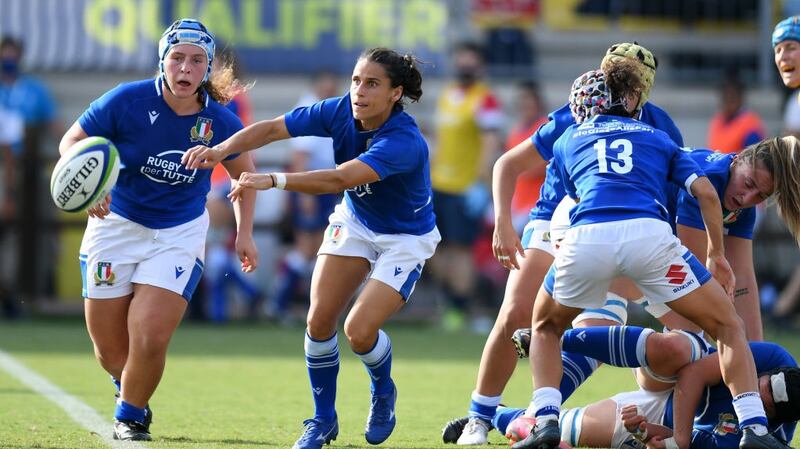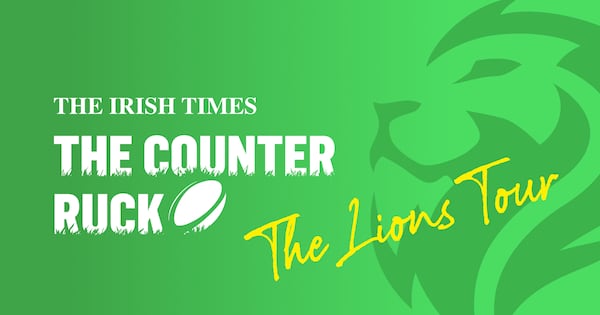A debate that has raged for years in women's rugby will come to an end this weekend. The Women's Six Nations finally has its own permanent solo window in the calendar, and with it comes a chance to forge its own identity, removing its grip from the coattails of the men's championship, a reliance on which was once vital but had started to suffocate.
As the women’s competition continued to grow in popularity both with live crowds and TV audiences, bumping up against men’s and under-20s fixtures – all vying for broadcast slots and favourable kick-off times over the same spring weekends – had become untenable. And while the change is a very welcome one, it would be remiss not to recognise just how important the competition in its previous guise has been to the development of the women’s game.
When discussions began in the mid-1990s between the mostly amateur women’s unions in Ireland, Wales, Scotland and England about establishing more regular Test matches, a version of the men’s championship was already well over 100 years old, having begun life as a Home Nations championship in 1883. It would be nice to say that the women’s championship sprung into life and made up for all that lost time. In reality it stuttered for years, with Ireland dropping in and out, France and Spain joining, and then the Spanish being elbowed out to make way for Italy so that the women’s competition could align with the men.
But a protected window in which to play guaranteed Test matches while the women’s game was still getting off the ground around the world was a luxury, and one not afforded to anyone outside of Europe’s top tier, with teams such as New Zealand and Australia often barely playing at all between World Cups. To that end, the Six Nations has arguably been the most important competition in the history of women’s rugby, giving the game an unparalleled spotlight and profile, and an association with a credible and popular brand already well known to fans.
It has also given a platform for the talent of gifted players such as Estelle Sartini, Karen Almond and Sandra Colamartino while in the modern game Jade Konkel, Emily Scarratt and Jasmine Joyce are now instantly recognisable in rugby circles thanks largely to the Six Nations so often being shown on terrestrial television. If development in the early years was slow, the same cannot be said of the past few seasons where the rate of growth has been deeply impressive.
While the championship overall has become much more competitive, massive scorelines are still a problem
In 2019, the last time there were a full set of uninterrupted fixtures in the women’s championship, records tumbled. Crowds were on the up, with England attracting more than 10,000 in Exeter and some 6,000 in the stands to see Ireland play France. These were figures that would scarcely have been believable even a few years ago as the now-retired Katy Daley-Mclean reminded everyone at the time. She recalled that for her first few caps there were just a few hundred people in the crowd, mostly family and friends.
TV audiences have also been soaring, with England’s Six Nations game against France getting close to a peak of one million viewers in 2020. The women’s competition now finally has its own title sponsor in TikTok – remarkably, its first ever – and every game will be available to watch either live on television or online. No longer competing with the men’s championship, a standalone window will also hopefully enable a fuller and more insightful conversation about the many exciting storylines, as well as the challenges facing the women’s game.
And there’s plenty of all that. I started writing about the women’s Six Nations in 2002 as a young reporter in Ireland. The Ireland team were back in it having dropped out for a couple of years to focus on building their grassroots game and there was a rude awakening when they were welcomed back with a 79-0 hammering at the hands of England. While the championship overall has become much more competitive, massive scorelines are still a problem. Last season, England beat Italy 67-3 and France beat Ireland 56-15.
The championship is still rather split in two – there’s England and France, and then there’s everyone else. The chances of anyone beating a fully professional English team before their trip to France in the final game, sit somewhere between slim and none. That dominance is a problem but there are other intriguing stories that will play out.
Wales have momentum following a good autumn campaign and the influx of new investment which has seen 12 of their players handed contracts. With a new-look coaching team and the return of experienced players such as Sioned Harries, their opening clash with Ireland should tell us a lot about how quickly their fortunes have turned.
A lot of water has flown under the bridge in Ireland since the disappointing failure to qualify for the World Cup last year. An explosive open letter, signed by most of the playing squad at the time, citing a lack of trust in the IRFU, kickstarted months of discussions and planning which resulted recently in a significant investment boost.
Ireland have a new head coach, Greg McWilliams, who has made Nichola Fryday the new captain. Their clash with Scotland – who effectively dumped them out of the World Cup running – will be well worth watching. Scotland have improved out of sight in recent years and are building nicely towards this autumn's World Cup in New Zealand.

Italy are lacking match practice but have a handful of world-class players in their ranks including Sara Barattin, the only Italian women's player to have won more than 100 caps. Provided the French don't succumb to one of their infamous slip-ups on the road, the final game in Bayonne should be a fitting climax to a women's championship that will have more eyes on it than ever before. – Guardian












